
Don't Trust, Don't Fear, Don't Beg: The Extraordinary Story of the Arctic 30
by
Ben Stewart
Published 4 May 2015
Instead of seeing the melting as a grave warning to humanity, they are eyeing the previously inaccessible oil beneath the seabed at the top of the world. They’re exploiting the disappearance of the ice to drill for the very same fuel that caused the melting in the first place. That’s why, in summer 2013, thirty men and women from eighteen countries sailed for a Russian Arctic oil platform, determined to focus global attention on the new Arctic oil rush. They saw how fossil fuels have come to dominate our lives on Earth, how the energy giants bestride our planet unchecked. They knew that at some time and in some place somebody had to say, ‘No more.’ For those activists that time was now and that place was the Arctic. Their ship was seized, they were thrown in jail and faced fifteen years in prison.
…
Sometime in the next few weeks Gazprom will try to become the first company in history to pump oil from the icy waters of the Arctic. Until now the thick sea ice has made drilling here almost impossible, but as temperatures rise the oil companies are moving north, and if the Prirazlomnaya succeeds it will spark a new Arctic oil rush. That’s why the Sunrise is here. That’s why, right now, across this ship, thirty men and women are making final preparations to scale that platform and shut it down. Frank leans over the bow and sees his reflection in the water. He breathes deeply and looks up. The last of the sun is sinking below the horizon.
…
Activists had confronted BP’s Northstar drilling operations in Alaska; Greenpeace ships had documented climate change impacts off Greenland and Svalbard; and Mads Christensen’s team in Scandinavia had campaigned against the industrial fishing fleets taking their destructive methods to the Arctic. But it was Deepwater Horizon that provided the spark for a new wave of action. With the world’s oil giants moving into the melting waters above the Arctic Circle, Sauven got his way and the Greenpeace ship Esperanza sailed north to confront the new Arctic oil rush. That summer Greenpeace played a cat-and-mouse game with the Danish navy – still the governing power in Greenland. The activists outpaced the Danish special forces RHIBs and occupied the underside of the Cairn platform, forcing a temporary shutdown. The following year Greenpeace returned to Greenland, this time with Frank Hewetson leading the logistics operation.
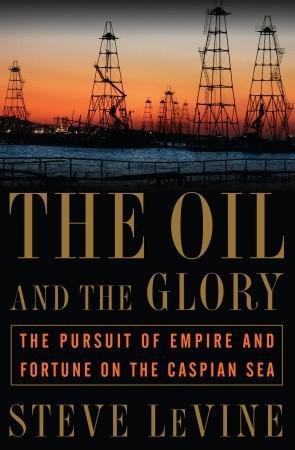
The Oil and the Glory: The Pursuit of Empire and Fortune on the Caspian Sea
by
Steve Levine
Published 23 Oct 2007
And so “pipeline politics” became a modern-day version of the nineteenth century’s Great Game, in which Britain and Russia had employed cunning and bluff to gain supremacy over the lands of the Caucasus and Central Asia. This book is the story of how, at the dawn of the twenty-first century, the game was played once again across the harsh environs of the Caspian Sea. CHRONOLOGY * * * Pre-Soviet period 1823 Zeynalabdin Tagiyev born 1872 Sale of Baku land legalized; oil rush begins 1873 Robert Nobel arrives in Baku 1878 Ludvig Nobel unveils Zoroaster, world’s first oil tanker 1883 Edmond and Alphonse de Rothschild arrive in Batumi 1901 Baku supplies 51 percent of world’s oil 1905 Worker uprising destroys Baku oil fields 1906 Baku-Batumi oil pipeline completed 1914 World War I breaks out 1917 Bolshevik Revolution 1920 Bolsheviks overthrow Azerbaijan government (April 28) Early Soviet period 1920 Standard Oil concludes deal with Nobels (July 30) 1921 Lenin’s “New Economic Policy” invites foreign businesses 1924 Britain recognizes Soviet Union Lenin dies 1933 United States recognizes the Soviet Union Later Soviet period 1968 James Giffen hired by Soviet trader Ara Oztemel 1969 Détente begins; Nixon liberalizes trade with Soviets 1972 Oztemel fires Giffen 1973 John Deuss launches first oil trading venture U.S.
…
-USSR Trade Council 1985 Blowout at Tengiz oil field (June 24) 1987 Gorbachev legalizes joint ventures (January 13) Giffen forms American Trade Consortium (May) Heydar Aliyev sacked by Gorbachev from Politburo (May) Chevron in Moscow to look at Soviet oil properties (September) 1989 Steve Remp arrives in Baku (May) Nursultan Nazarbayev becomes Communist Party chief of Kazakhstan (June 22) 1990 Gorbachev signs START II with Bush, and preliminary agreement for Tengiz with Chevron (June 2) Baku’s new oil rush begins with first oil show (October) 1991 Kazakhstan takes over Tengiz talks with Chevron (July 23) Attempted anti-Gorbachev putsch (August 19) Omanis loan Kazakhstan $100 million for grain (November) Ex-Soviet republics form Commonwealth of Independent States (December 21) Gorbachev resigns (December 26) Soviet Union dissolves (December 31) Giffen’s American Trade Consortium ceases to function (December 31) Post-Soviet period 1992 Chevron fires Giffen as adviser (January) Ex-Soviet foreign minister Eduard Shevardnadze returns to Georgia homeland (March) Nazarbayev and Chevron chairman Ken Derr sign preliminary Tengiz deal at Blair House (May 18) Kazakhs, Omanis form consortium to build export pipeline for Tengiz (June 11) Margaret Thatcher helps seal BP’s offshore Baku deal (September 7) Giffen helps Kazakhstan get uranium pact with United States (October) 1993 Preliminary agreement to develop Kazakhstan’s Kashagan oil field (January 9) Clinton, Yeltsin establish Gore-Chernomyrdin commission (April 3–4) Final Tengiz agreement signed (April 6) Heydar Aliyev announces assumption of power in Azerbaijan (June 18) Russia severs Caspian states’ natural gas exports (November) Russia’s Yuri Shafranik promised 10 percent of Baku offshore deal (November 19–20) 1994 Yeltsin declares Russia ex-Soviet regions’ “guarantor of stability” (February 21) Russia asserts veto rights over Caspian development (April 28) “Contract of the Century” signed for Baku offshore wells (September 20) Giffen put in charge of negotiating Kazakhstan’s major oil deals (December) 1995 Kazakhstan lets Gazprom into Karachaganak natural gas field (February 12) Car wreck kills Qais al-Zawawi, Deuss’s Omani patron (September 12) Clinton phones Heydar Aliyev to urge dual pipeline routes (October 2) Dual Baku pipelines announced (October 9) Unocal signs for trans-Afghan pipeline (October 21) 1996 Deuss forced out of Tengiz pipeline consortium (January) Tengiz pipeline consortium restructuring agreed in Moscow (March 11) Clinton signs Iran-Libya Sanctions Act (August 5) Taliban captures Kabul (September 27) 1997 Collapse of Thai baht triggers financial turmoil (July 2) U.S.
…
On the other side of the world, America had yet to develop a commercially exploitable oil industry. But that was about to change, sending shock waves all the way to Russia and, finally, to Baku. In 1859, a tenacious entrepreneur named Edwin Drake struck a gusher after twenty months of toil in the poor western Pennsylvania town of Titusville. With it, he triggered the world’s first oil rush. In the wake of that discovery, a stern and lanky Clevelander named John D. Rockefeller cornered both the U.S. and European markets, earning him history’s first great oil fortune. By the late 1860s, Rockefeller-led advances were revolutionizing the oil business, but production methods at Mr. Jaz’s property were substantially unchanged.

A Pipeline Runs Through It: The Story of Oil From Ancient Times to the First World War
by
Keith Fisher
Published 3 Aug 2022
However, it was only after Abraham Gesner in Canada, and James Young in Britain, managed to distil effective lamp oils from coal and asphalt in the late 1840s that, in 1853, a Polish pharmacist in Lviv (in present-day western Ukraine), Jan Zeh, and his apprentice Ignacy Łukasiewicz, succeeded in distilling the first commercially viable lamp oil from crude Galician petroleum, for which a local tinsmith designed lamps that could burn the oil effectively, with a reasonably clean, bright flame. This development sparked an oil rush: hundreds more oil wells were now dug and many small refineries were established across the region. It particularly drew in the local Jewish population who had struggled for decades under discriminatory employment restrictions imposed by the Habsburg authorities. By the late 1850s the Lviv General Hospital and some of the larger stations of the Emperor Ferdinand Northern Railway had turned to kerosene lamps for illumination.139 Whereas in western Galicia some wealthy landowners invested in somewhat larger-scale crude extraction, the very small-scale extraction methods practised in eastern Galicia made it difficult for refiners there to manufacture lamp oil in large quantities.
…
Peace without this would be fallacious and temporary … When we have effectually chastized them we may then listen to peace and endeavour to draw further advantages from their fears.60 From Fort Pitt on the Ohio Forks of western Pennsylvania, Colonel Daniel Brodhead led 600 troops of the Continental Army on a tour of plunder and destruction against the Seneca and Delaware villages of the Allegheny Valley. Through Buckaloons and Conewango, across the New York state boundary up to Bucktooth (future Salamanca) and back south across French Creek via Venango, the Indians’ homes and crops were burnt to ashes. Only a very few Seneca ever returned to live here, the future centre of America’s first oil rush.61 A report in the New York Gazette described how Brodhead’s troops advanced on a region of Indian towns with extensive cornfields on both sides of the river, and deserted by the inhabitants on our approach. Eight towns we set in flames … The corn, amounting in the whole to near six hundred acres, was our next object, which in three days we cut down and piled into heaps, without the least interruption from the enemy.
…
The gas from below, from a depth of 145 feet was forcing up immense quantities of oil in a fearful manner and attended with a noise that was terrifying at times, in pulse like throes, the gas threw up a stream of oil the full size of the pipe to the height of three feet above its top, and continued a boiling, tossing and surging commotion for a minute throwing out, seemingly, a half barrel of oil at a single toss of the gas … [W]hen the gas subsided for a few seconds, the oil rushed back down the pipe with a hollow, gurgling sound, so much resembling the struggle and suffocating breathings of a dying man, as to make one feel as though the earth were a huge giant seized with the pains of death and in its spasmodic efforts to retain a hold on life was throwing all nature into convulsions.
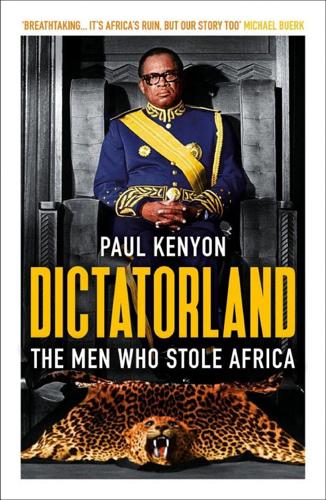
Dictatorland: The Men Who Stole Africa
by
Paul Kenyon
Published 1 Jan 2018
They quietly rolled in the rig and began drilling. It was the spring of 1959. A mile beneath the Libyan desert, Esso hit the jackpot. It was a staggering find. There were 2 billion barrels of oil down there, with several interconnecting reservoirs that promised more. It became known as the Zelten Field and heralded an unseemly Libyan oil rush. * One summer evening in West London I was sitting in a cramped Indian Restaurant with an oilman who holds the secrets to some of North Africa’s most contentious early deals. David Orser is an American who cut his teeth in the Libyan desert, swept up in that first wave of exploration fever. ‘They used to call him “straight-arrow”,’ chuckled his wife across the table.
…
A young Libyan army officer had just returned from a British military training school, and had begun organizing a clandestine revolutionary group called the Free Officers Movement, named after his hero Nasser’s original organization. He hadn’t enjoyed England much, with its noisy traffic and rowdy bars, and was pleased to be back home. But he arrived in the middle of the oil rush, and saw where the king’s corruption was leading the country. He couldn’t sit back and watch while Libya’s natural resources were being drained into the pockets of a privileged few, particularly when Colonel Nasser was inciting young Libyan nationalists to rise up and align themselves with the revolutionary Arab states in a display of Pan-Arab unity.
…
Walter International had agreed to arrange this and pay his fees, but instead of concentrating on his English lessons in southern California, Teodoro had discovered sports cars and girls, and the company was footing the bill. What amazed Bennett was that the oilman didn’t think the arrangement unusual, just that Teodoro had pushed it a little too far. But then, Walter International was a small company, experienced at punching holes in the earth, inexperienced at doing deals with African dictators. When the oil rush began, the big players, along with a US bank, lawyers and real estate companies, would pay court to Obiang and his family on a scale the oil industry had seldom witnessed. In early 1993 John Bennett was awoken at 2 a.m. in his residence by a phone call. It was a colleague from the embassy. A letter had just been delivered and he wanted Bennett to read it, urgently.

Living in a Material World: The Commodity Connection
by
Kevin Morrison
Published 15 Jul 2008
The extra processes required to extract and refine tar sand compared with conventional oil add significantly to its cost. Only in recent years has it been economic to commercially exploit the deposits of tar and oil sands, found mainly in Canada and Venezuela. The rise in Canadian petroleum production from oil sands has created an oil rush in the state of Alberta, which has become the Saudi Arabia of unconventional oil, and tar sands provide a new source of supply for American drivers. The US imports more oil from Canada than any other country. Given their political and geographical proximity, this is probably as close as the US may get to energy independence.
…
Amalgamated floated in 1889, bought fellow copper producer Anaconda (Schmitz, 1986), and in the same year attempted to corner the copper market by holding back shipments to Europe. This pushed prices higher, which stimulated supplies from other sources. Amalgamated was left holding very large stocks at a time of rapidly plunging prices (Gibson-Jarvie, 1976). The Rothschild bank – which had historically been involved in the gold trade, and which was a financier to the oil rush in the Caspian Sea in the late 19th century, and the diamond trade through its interests in De Beers – was also interested in copper during this period; it was financier to the Secretan scheme at a time when it was a key shareholder in Rio Tinto, and also to Anaconda. This combined interest gave the Rothschilds ‘real power’ in the world copper market in the late 19th century (Ferguson, 1998).24 A second copper producer scheme was set up – the Copper Producers’ Association – which attempted to peg price and limit production when market demand weakened.

Feral: Rewilding the Land, the Sea, and Human Life
by
George Monbiot
Published 13 May 2013
The David Suzuki Foundation, 2010, ‘Protecting species that need it’, http://www.davidsuzuki.org/issues/wildlife-habitat/science/endangered-species-legislation/left-off-the-list-1/ 7. Environment Canada, viewed 7 February 2013, Species at Risk Act, http://www.ec.gc.ca/alef-ewe/default.asp?lang=en&n=ED2FFC37-1 8. Nathan Vanderklippe, 16 May 2012, ‘Reviving Arctic oil rush, Ottawa to auction rights in massive area’, The Globe and Mail, http://www.theglobeandmail.com/news/politics/reviving-arctic-oil-rush-ottawa-to-auction-rights-in-massive-area/article4184419/ 1. RAUCOUS SUMMER * This term was coined by Jay Hansford Vest.7 It has been championed by Dr Mark Fisher, whose work has been influential in shaping this book. 1. J. G. Ballard, 2006, Kingdom Come, Fourth Estate, London. 2.
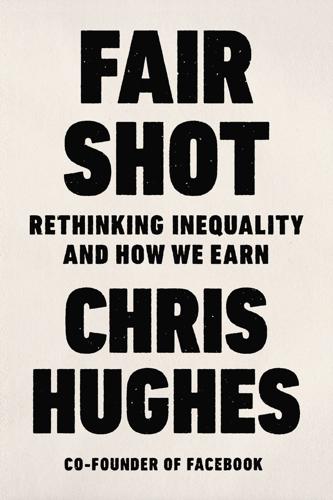
Fair Shot: Rethinking Inequality and How We Earn
by
Chris Hughes
Published 20 Feb 2018
Each year every Alaskan gets about $1,400, or $120 a month, paid out of the Alaska Permanent Fund. The father of the fund was a man who governed in prose, not poetry. Jay Hammond, the Republican governor of Alaska from 1974 to 1982, had in his lifetime been a World War II fighter pilot, backcountry guide, and commercial fisherman. In the mid-1970s, during the heady days of the oil rush, Hammond found himself at the helm of a state flush with cash. He decided to propose a novel idea he had come up with years before when he was mayor of Bristol Bay Borough, a region of fishing villages in southwest Alaska with a tiny population. Hammond had noticed that the out-of-state companies that extracted millions of dollars of profit from commercial fishing were investing little to no money in the poor villages that their workers lived in.

Economic Gangsters: Corruption, Violence, and the Poverty of Nations
by
Raymond Fisman
and
Edward Miguel
Published 14 Apr 2008
Overall, the Angolan economy has taken off since the war’s end, with income per capita rising by more than 20 percent between 2003 and 2005— proving once again that the poorest economies can quickly rebound from war. If the old diamond companies are suffering, the rest of the country isn’t. In the oil rush that has seized much of Africa in recent years, we may be witnessing another disconnect 184 TH E RO A D BA CK F RO M WAR between economic prosperity and business profits. Some Western oil companies, whether inhibited by ethics or constrained by law, have shied away from working with the most unsavory African dictators.

Blindside: How to Anticipate Forcing Events and Wild Cards in Global Politics
by
Francis Fukuyama
Published 27 Aug 2007
Testimony of Stuart Levey, Under Secretary, Office of Terrorism and Financial Intelligence, U.S. Department of the Treasury, before the Committee on Banking, Housing, and Urban Affairs, July 13, 2005. 9. Testimony of Secretary of State Condoleezza Rice, before the Senate Foreign Relations Committee, April 5, 2006. 10. Marianne Lavelle, “The Oil Rush,” U.S. News & World Report, April 24, 2006. 11. Daniel Yergin, “Ensuring Energy Security,” Foreign Affairs (March-April 2006). 12. Amory Lovins, Winning the Oil Endgame (Snowmass, Colo.: Rocky Mountain Institute, 2004). 13. David Luhnow and Geraldo Samor, “Bumper Crop,” Wall Street Journal, January 9, 2006. 14.

Last Train to Paradise: Henry Flagler and the Spectacular Rise and Fall of the Railroad That Crossed an Ocean
by
Les Standiford
Published 4 Aug 2003
As far as anyone knows, even the most traumatic events in his life produced no soul-searching confidences or outpourings of grief. Certainly no bundle of letters or heartfelt diary entries have surfaced to counter the image of a supremely stoic man. A story was told by one of Flagler’s subordinates, who, having learned of a stunning reversal in the fortunes of Standard Oil, rushed into Flagler’s office to deliver the good news that a judge’s fine of $29 million levied earlier against the company had been reversed. Flagler had been greatly upset by levy of the fine; not only was the amount unprecedented, but he considered it a direct result of Roosevelt’s personal vendetta against him.

The People's Platform: Taking Back Power and Culture in the Digital Age
by
Astra Taylor
Published 4 Mar 2014
In many ways, the disaster in the Gulf was remarkably visible (although a quickly imposed ruling barred anyone from going within sixty-five feet of any response vessels or booms on the water or beaches, under threat of civil penalty of up to forty thousand dollars and a Class D felony punishable by up to fifteen years in jail). It was a media event for the new age: thousands of us sat glued to streaming footage of the oil rushing from its source; we forwarded videos of the burning rig, black smoke choking the sky; Stephen Colbert’s pithy comment—“In honor of oil-soaked birds, ‘tweets’ are now ‘gurgles’ ”—became the most retweeted of the year. But sitting in the boat, I realized just how profoundly the decks were stacked against independent truth tellers—and not only because we were self-financed and especially vulnerable to bullying regulations.
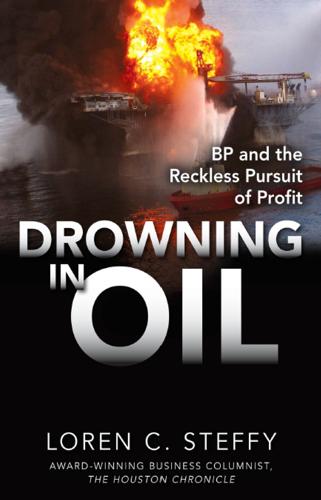
Drowning in Oil: BP & the Reckless Pursuit of Profit
by
Loren C. Steffy
Published 5 Nov 2010
“You had to remove yourself from conversations, from play acting, from the macho talk. You became very good at avoidance.”4 Nevertheless, Browne pursued his career plans, joining BP full-time after graduating from Cambridge. He was posted to Alaska. Anchorage in the late 1960s was an oil boomtown, not unlike those that had populated Texas in the early days of its oil rush. Browne arrived at his hotel on his first day in town to find that “the noisy smoke-filled bar was crammed with burly, beer-swilling men, with ‘working’ women loitering at the entrance.”5 Like most boomtowns, it was rowdy and crawling with opportunists looking to make a fast buck. Oilfield work was hard in the best of conditions, but in the frozen climes of Alaska, companies had to pay top dollar to get even unskilled labor to the job site.
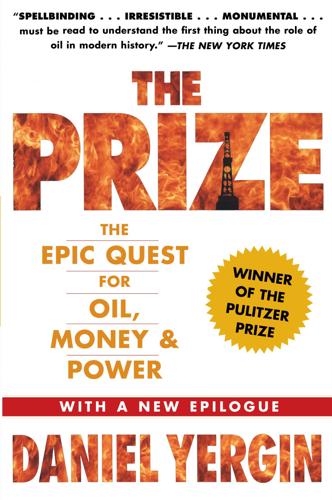
The Prize: The Epic Quest for Oil, Money & Power
by
Daniel Yergin
Published 23 Dec 2008
Now he had done the same for Venezuela.[5] The La Rosa strike confirmed that Venezuela could be a world-class producer. The discovery inaugurated a great oil frenzy. Over a hundred groups, mostly American, but some British, were soon active in the country. They extended from the largest companies down to independent oil men like William F. Buckley, who obtained a concession to build an oil port. The oil rush provided enormous opportunity for General Gomez to enrich himself. His family and cronies, the Gomecistas, would, infallibly, obtain choice concessions from the government and then resell them, at considerable profit, to the various foreign companies, passing on kickbacks to the general himself.
…
He was indeed in the line of the great buccaneer- creators of oil: Rockefeller, Samuel and Deterding, Gulbenkian, Getty and Mattei. He was also an anachronism, a privateer from the past, in spirit a "merchant from Odessa" circling the globe in his corporate jet in search of the next great deal. But it was a deal in Libya that had made possible his global tycoonery.[6] The mad Libyan oil rush was already well along when, in 1965, Occidental won concessions there in the second round of bidding. Oxy's thick bid stood out midst the 119 others because it had been done up, under Hammer's personal supervision, on sheepskin manuscripts and was wrapped in red, black, and green ribbons—the colors of the Libyan flag.
…
Toward the end of 1970, British Petroleum announced the discovery of oil in the Forties field, on the British side, one hundred miles northwest of Ekofisk. It was a huge reservoir. A series of major strikes followed in 1971, including Shell and Exxon's discovery of the huge Brent field. The North Sea oil rush was on. The 1973 oil crisis turned the rush into a roar. Fortunately, a new generation of technology was either available or under development that would allow production to proceed in the North Sea, a province of the sort that the industry had never before attempted. The whole venture was risky and dangerous—physically and economically.
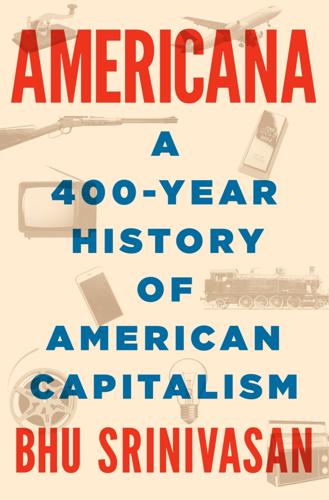
Americana: A 400-Year History of American Capitalism
by
Bhu Srinivasan
Published 25 Sep 2017
Now the ships were almost worthless. It was fitting that this industry, which had been captured in countless fictional forms—most notably Herman Melville’s Moby-Dick—would maintain its romance with a bit of theater even in its hour of sunset. Unlike the Gold Rush, which had started from a single momentous discovery, the oil rush was the product of dozens of experiments. The final series of trials centered in one region of western Pennsylvania, where oil was so rich that it practically seeped out of the ground or from streambeds. Where it was present, it was largely viewed as an unavoidable, foul-smelling nuisance. Notably, it had obstructed one entrepreneur, Samuel Kier, who had started a venture to drill for salt water to make salt, only to have his efforts yield more of this useless oil.
…
Even with wholesale prices for crude oil hovering around 50 cents per gallon, ventures such as Kier’s barely yielded two to ten barrels per day—enough to market as expensive bottled potions, but not plentiful or cheap enough to light homes across America. But Bissell’s Pennsylvania Rock Oil Company kept at it and, after a bit of difficulty, reorganized as the Seneca Oil Company. It then hired the man universally credited with the starting the oil rush. The company dispatched Edwin Drake to the small Pennsylvania town of Titusville, nearly forty miles from the nearest tracks of the Erie Railroad. After months spent organizing and procuring equipment, including a small steam engine, Drake started drilling into the ground in May 1859, laying iron pipe as the drill made progress.

Americana
by
Bhu Srinivasan
Now the ships were almost worthless. It was fitting that this industry, which had been captured in countless fictional forms—most notably Herman Melville’s Moby-Dick—would maintain its romance with a bit of theater even in its hour of sunset. Unlike the Gold Rush, which had started from a single momentous discovery, the oil rush was the product of dozens of experiments. The final series of trials centered in one region of western Pennsylvania, where oil was so rich that it practically seeped out of the ground or from streambeds. Where it was present, it was largely viewed as an unavoidable, foul-smelling nuisance. Notably, it had obstructed one entrepreneur, Samuel Kier, who had started a venture to drill for salt water to make salt, only to have his efforts yield more of this useless oil.
…
Even with wholesale prices for crude oil hovering around 50 cents per gallon, ventures such as Kier’s barely yielded two to ten barrels per day—enough to market as expensive bottled potions, but not plentiful or cheap enough to light homes across America. But Bissell’s Pennsylvania Rock Oil Company kept at it and, after a bit of difficulty, reorganized as the Seneca Oil Company. It then hired the man universally credited with the starting the oil rush. The company dispatched Edwin Drake to the small Pennsylvania town of Titusville, nearly forty miles from the nearest tracks of the Erie Railroad. After months spent organizing and procuring equipment, including a small steam engine, Drake started drilling into the ground in May 1859, laying iron pipe as the drill made progress.

Mine!: How the Hidden Rules of Ownership Control Our Lives
by
Michael A. Heller
and
James Salzman
Published 2 Mar 2021
Even in Texas, it would not be hard to protect aquifers while respecting ranch and farm owners’ views. How can that be? Look to oil and gas. Black Gold One hundred and fifty years ago, the oil industry was booming…in Pennsylvania. Ever wonder about the product name, Quaker State Oil? The first oil rush occurred in Titusville, Pennsylvania, back in 1859. Wildcatters raced in, trying to get as much crude out of the ground as fast as possible. Photos from the period show a forest of wells crowding each other. Drillers overpumped oil in Pennsylvania for the same reasons they overdraft groundwater in California: the rule of capture.
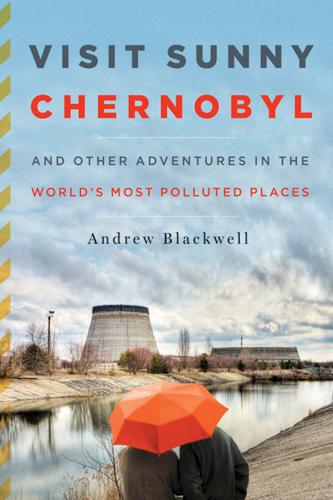
Visit Sunny Chernobyl: And Other Adventures in the World's Most Polluted Places
by
Andrew Blackwell
Published 22 May 2012
But a hurricane blew the sign down, and it has not been replaced. To people driving past, Spindletop is a void space, a low mile of trees by the highway that goes unremarked, even in the area whose prosperity it once sparked. But however invisible, the wedge of land between Sulphur Drive and West Port Arthur Road holds a secret. And the secret is this: the oil rush on Spindletop is not over. Not quite. Steven Radley is the last man standing. More than a hundred years and 150 million barrels of oil after Patillo Higgins’s hunch first came good—and a half century after the major producers left this land for dead—he is doing his damndest to squeeze every last cup of petroleum out of its stubborn soil.
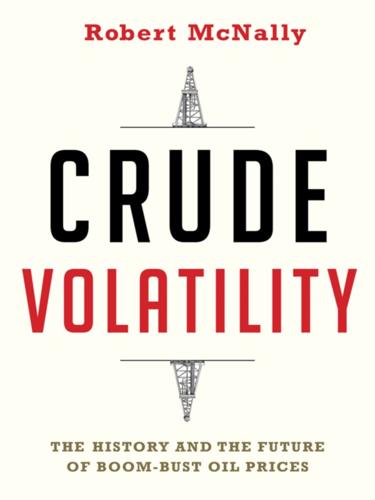
Crude Volatility: The History and the Future of Boom-Bust Oil Prices
by
Robert McNally
Published 17 Jan 2017
Doan, Lynn, and Dan Murtaugh. “Shale as World’s Swing Producer Signals ‘Jagged’ Oil Future.” Bloomberg News, April 19, 2015. http://www.bloomberg.com/news/articles/2015-04-20/shale-as-world-s-swing-producer-signals-jagged-future-for-oil. Dolson, Hildegarde. The Great Oildorado: The Gaudy and Turbulent Years of the First Oil Rush: Pennsylvania 1859–1880. New York: Random House, 1959. Domanski, Dietrich, Jonathan Kearns, Marco Jacopo Lombardi, and Hyun Song Shin. “Oil and Debt.” Bank for International Settlements. March 18, 2015. http://www.bis.org/publ/qtrpdf/r_qt1503f.htm. Dombey, Daniel, and Javier Blas. “Naimi Tightlipped on Bush Oil Appeal.”
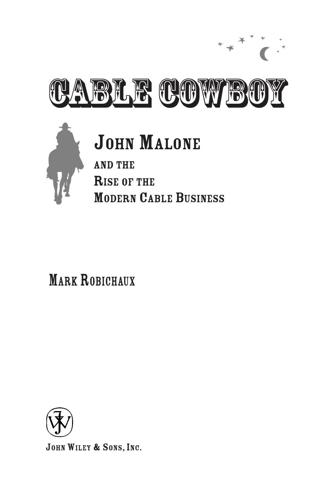
Cable Cowboy
by
Mark Robichaux
Published 19 Oct 2002
Something about the Western city came to define the spirit of these pole climbers, in an era when individual men, not conglomerates, reigned sovereign over an industry. So in 1965, TCI moved to Denver to play with the big boys. By the mid-1960s, Bob Magness had realized the potential of community antenna to fill a vast need; he likened cable to the oil rush days in his native Oklahoma and Texas. Though he was building his own wealth, building TCI had given Magness a thrill not unlike betting big in a poker game. He continued borrowing money and buying up systems. He had good reason to believe he held a strong hand. Few cable systems had ever failed up to this point, largely because the values of the systems that were trading hands kept rising.

The Quest: Energy, Security, and the Remaking of the Modern World
by
Daniel Yergin
Published 14 May 2011
., Generation in Waiting: The Unfulfilled Promise of Young People in the Middle East (Washington, DC: Brookings Institution, 2009). 8 Clay Shirky, “The Political Power of Social Media,” Foreign Affairs 90, no. 1 (2011), pp. 28–41. 9 Marcus Noland and Howard Pack, The Arab Economies in a Changing World (Washington, DC: Peterson Institute, 2007), pp. 99–111. 10 David Hobbs and Daniel Yergin, “Fiscal Fitness: How Taxes at Home Help Determine Competitiveness Abroad,” IHS CERA, August 2010; interview with Lucian Pugliaresi. 11 Bhushan Bahree, “Fields of Dreams: The Great Iraqi Oil Rush: Its Potential, Challenges, and Limits” IHS CERA, March 2010. 12 Middle East Economic Survey, October 11, 2010, October 18, 2010. 13 Michael Axworthy, A History of Iran: Empire of the Mind (New York: Basic Books, 2010), p. 271 (“stupidity”). 14 Kenneth Pollack, The Persian Puzzle: The Conflict Between Iran and America (New York: Random House, 2004), pp. 267, 286. 15 Karim Sadjadpour, Reading Khamenei: The World View of Iran’s Most Powerful Leader (Washington, DC: Carnegie Endowment for International Peace, 2009), pp. vi, 15; interview with Archie Dunham. 16 Interview. 17 New York Times, March 10, 1995 (Christopher). 18 Pollack, The Persian Puzzle, pp. 272, 282 (executive order); interview with Archie Dunham. 19 Axworthy, A History of Iran, p. 277 (“constitutional government”); Robin Wright, The Iran Primer: Power, Politics, and U.S.
…
Averill, Bruce, and Eric A. M. Luijf. “Canvassing the Cyber Security Landscape: Why Energy Companies Need to Pay Attention.” Journal of Energy Security, May 2010. Axworthy, Michael. A History of Iran: Empire of the Mind. New York: Basic Books, 2010. Bahree, Bhushan. “Fields of Dreams: The Great Iraqi Oil Rush: Its Potential, Challenges, and Limits.” IHS CERA. March 2010. Baker, John. “The Successful Privatization of Britain’s Electricity Industry.” In Leonard S. Hyman, The Privatization of Public Utilities. Vienna, Va.: Public Utilities Reports, 1995. Baker, Peter, and Susan Glasser. Kremlin Rising: Vladimir Putin’s Russia and the End of Revolution.
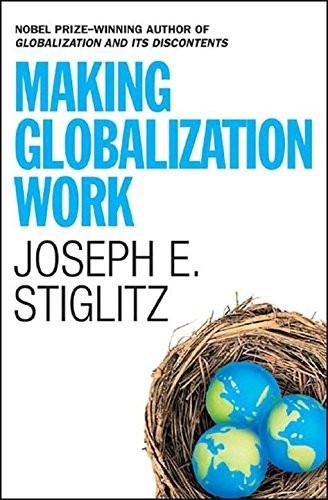
Making Globalization Work
by
Joseph E. Stiglitz
Published 16 Sep 2006
CHAPTER 5 Lifting the Resource Curse At the turn of the twentieth century, czarist-ruled Azerbaijan was the world’s biggest exporter of oil, and its largest city, Baku, on the shores of the Caspian Sea, was like the Wild West. People flooded in from all parts of Russia, intent on making money in the oil rush. Jews, Turkomans, Kazakhs, and assorted Europeans joined the fray. Real estate prices soared as the new arrivals competed for space. Oil rigs and refineries dotted the city. Alfred Nobel worked here for a while, and the park he built still remains. In the course of the century, Azerbaijan’s oil made many people rich, yet much of the nation remained very poor.

The Windup Girl
by
Paolo Bacigalupi
Published 15 Sep 2009
"Burn it. We both know what is happening here. Give the farang something to claim against their insurance companies. Let them know that their activity is not free." Jaidee grins. "Burn it all. Every last crate." And for the second time that night, as shipping crates crackle with fire and WeatherAll oils rush and ignite and kick sparks into the air like prayers going up to heaven, Jaidee has the satisfaction of seeing Kanya smile again. * * * It is nearly morning by the time Jaidee returns home. The ji ji ji of jingjok lizards punctuates the creak of cicadas and the high whine of mosquitoes. He slips off his shoes and climbs the steps, teak creaking under his feet as he steals into his stilt-house, feeling the smooth wood under his soles, soft and polished against his skin.
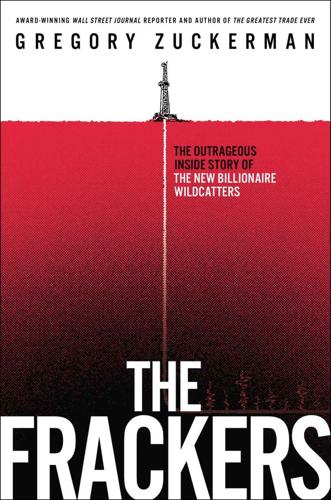
The Frackers: The Outrageous Inside Story of the New Billionaire Wildcatters
by
Gregory Zuckerman
Published 5 Nov 2013
Some locals believed it was named after a Native American expression. It’s more likely that it was a tribute to Bill Krohn, a popular and outgoing reporter for the Daily Ardmoreite in the city of Ardmore. Krohn had been an indefatigable journalist who traveled to oil fields to visit workers, breaking news on new oil discoveries and chronicling the 1920s oil rush. When he saw a roughneck, he’d call out the traditional Jewish greeting of “shalom aleichem,” or “peace be unto you.” Krohn became a well-liked figure, and his greeting caught on. He even popularized the traditional Jewish response to this greeting: “aleichem shalom,” or “unto you, peace.” When a newcomer heard the odd phrase and gave Krohn a look of confusion, the reporter would buy the fellow a raspberry soda at a nearby confectionery store and explain it all to him.

Underland: A Deep Time Journey
by
Robert Macfarlane
Published 1 May 2019
‘Here in some of the finest fishing grounds in the Arctic, here is where they were sonic blasting, testing for oil, here is where those idiots want to place the rigs.’ ~ On 15 June 1971 production began in the offshore oilfield known as Ekofisk, sited to the south-west of the Norwegian continental shelf. At that point the extent of the Norwegian oil-holdings was still unknown, but the rapid success of Ekofisk began a speculative oil-rush along the west and north-west coasts of Norway. The Norwegian government responded quickly, creating Statoil in 1972 and establishing the principle of substantial state participation in each production licence issued for these wealthy waters. Oil is Norway’s life-blood. Its system – political, infrastructural – is thickly oiled, through and through.

Connectography: Mapping the Future of Global Civilization
by
Parag Khanna
Published 18 Apr 2016
But China’s currency liberalization will make preventing Chinese money from flowing out of the country harder, and the Chinese passport now gets red-carpet treatment: Red is the new green. OIL AND WATER ACROSS THE WORLD’S LONGEST BORDER For centuries, natural resource supplies have lured waves of economic migrants seeking work and fortune. Today, Fort McMurray in Alberta, Canada, is one of those towns to which migrants have flocked in search of North America’s new “oil rush” riches. Canada only seriously tapped its oil sands (a patch larger than England) after the OPEC embargo of 1973. Suddenly Fort McMurray found itself properly incorporated as a city for the first time, and its population more than tripled to thirty thousand by 1980. In just the past ten years, the population has shot up again to eighty thousand.

Capitalism in America: A History
by
Adrian Wooldridge
and
Alan Greenspan
Published 15 Oct 2018
., Pennsylvania, with special reference to Its Use for Illumination and Other Purposes.” Three years later Edwin Drake began drilling for oil at Titusville, Pennsylvania, applying techniques used in salt wells. Though the Civil War briefly put a halt to the drilling, as soon as the war was over America witnessed an “oil rush” reminiscent of the California gold rush, and northwestern Pennsylvania was soon littered with makeshift oil wells and crude refineries where men refined oil much as they distilled whiskey, boiling the liquid and smelling it to see if it could be used for kerosene. Though the mountainous terrain of the Pennsylvania oil fields made transportation difficult, the construction of an oil pipeline in 1865 removed the bottleneck: oil flowed from Pennsylvania to railroad tanker cars and tanker ships and thence to giant refineries.
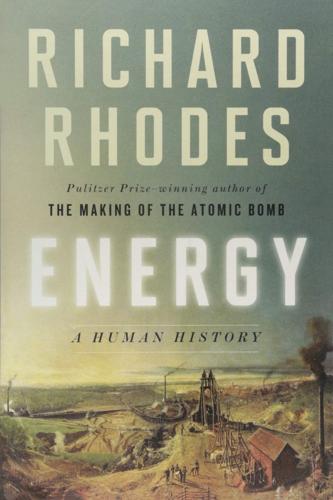
Energy: A Human History
by
Richard Rhodes
Published 28 May 2018
“From west to east,” Walker concludes, “and from north to south, the mechanical principle, the philosophy of the nineteenth century, will spread and extend itself. The world has received a new impulse.”71 It had, and the transformation would be profound. But the human world still largely lingered in the dark for half the earth’s each turning. There were remedies for that condition as well: oils, rushes, tallow, the fat of pigs, coal gas, whales. All would serve in their time. * * * I. Two centuries later, the greatest physicists of the early twentieth century—Ernest Rutherford, Albert Einstein, and Niels Bohr—would similarly dismiss the possibility of splitting the atom to release nuclear energy as “moonshine.”
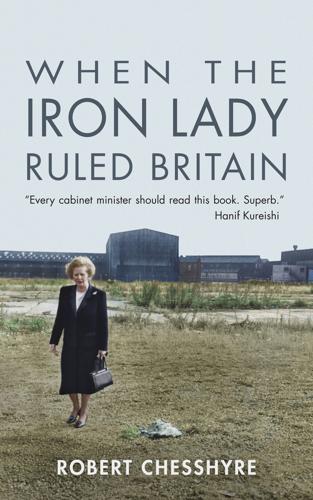
When the Iron Lady Ruled Britain
by
Robert Chesshyre
Published 15 Jan 2012
The danger is that if people think it is the end of the road, they will invest elsewhere. It is still a strong and diverse economy, and we must start paying more attention to the traditional side of things.’ Such men argued that Aberdeen had been inaccurately characterized as a former one-horse town that had enjoyed a few mad oil-rush years, and was about to revert to its primitive, dozy previous existence. In the early days of the boom, Americans would ask before they arrived whether the streets were paved, and some newcomers had been amazed to find a solid city, rather than a picturesque outpost of scattered crofts. ‘We weren’t going around in bare feet and kilts,’ said one businessman.
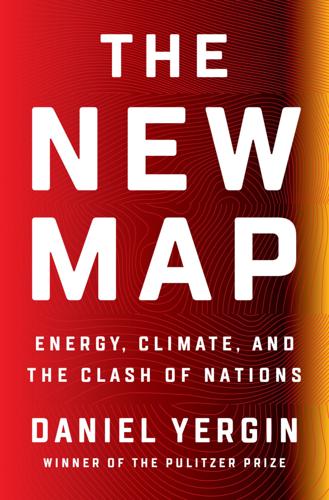
The New Map: Energy, Climate, and the Clash of Nations
by
Daniel Yergin
Published 14 Sep 2020
Dexter Filkins, “The Shadow Commander,” New Yorker, September 30, 2013; Ali Alfoneh, “Brigadier General Qassem Soleimani: A Biography,” AEI, no. 1 (January 2011); Ali Soufan, “Qassem Soleimani and Iran’s Unique Regional Strategy,” CTC Sentinel 11, no. 10 (November 2018). 4. Filkins, “The Shadow Commander.” 5. “Iraq Oil Rush,” New York Times, June 22, 2008 (“suspicions”); “Iraq—Systematic Country Diagnostic,” World Bank, February 2017. 6. Interview with Dr. Ashti Hawrami; IHS Markit, “KRG and Iraq Could Reach Oil Export and Revenue Deal in December, According to Turkey,” December 4, 2013. 7. Renad Mansour and Faleh A.

The Rise and Fall of Nations: Forces of Change in the Post-Crisis World
by
Ruchir Sharma
Published 5 Jun 2016
The money that poured into Silicon Valley start-ups in the late 1990s was also a good investment binge, since it left behind productive companies like Google, but its unraveling led in the short term to the 2001 recession. Now, as oil prices collapse, U.S. energy investments are plummeting, drilling rigs have been silenced from Texas to North Dakota, shale jobs are drying up, and shale boomtowns are turning into ghost towns. Though this oil rush leaves behind a productive new industry, a plus in the long run as it will likely keep a lid on U.S. energy prices, it poses a near-term risk because energy investment was such an important driver of U.S. growth in recent years, and that boost is now largely gone. The United States has also lost its advantage on the currency rule, which says that cheap is good.

Unreal Estate: Money, Ambition, and the Lust for Land in Los Angeles
by
Michael Gross
Published 1 Nov 2011
Like Don Benito Wilson before him, Doheny hoped that the tarry stuff, which most still thought a useless nuisance, signaled the presence of oil, and with $400 that Canfield borrowed, leased the oozing parcel of land. Within months, they’d drilled the first successful oil well in L.A., and with the money it produced plus backing from banker Isaias Hellman, among others, began leasing every promising property they could find. An unprecedented oil rush followed. It had taken thirty-five years, but Wilson’s dream of a west coast oil boom had finally come true. As railroads switched from coal to oil power and the internal combustion engine set loose the automobile, oil became one of the Southland’s leading industries. In the years that followed, Canfield and Doheny expanded their empires, together and separately, leasing land and drilling wells all over the region.
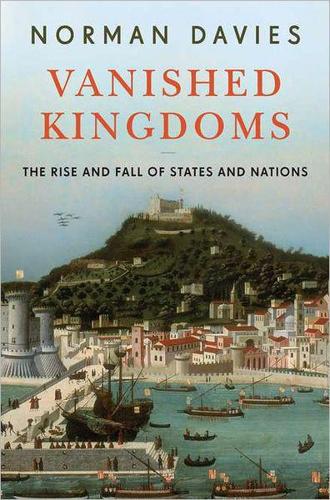
Vanished Kingdoms: The Rise and Fall of States and Nations
by
Norman Davies
Published 30 Sep 2009
After 1848 a wider railway network was built; export businesses increased, especially of timber, paper, sugar and tobacco; and several mechanized industries were launched. Oil, however, supplied the only resource to promise industrial development of more than provincial importance. Discovered in the 1850s in the district of Borysław-Drohobycz, it grew explosively into a wild oil-rush area of near-unregulated drilling and exploration. Foreign investment, mainly French and German, poured in. Borysław and nearby Tustanowice saw hundreds of oil shafts spring up in the muddy fields alongside the district’s only paved road, and 100 trains a day left the state refinery at Drohobycz.

Vanished Kingdoms: The History of Half-Forgotten Europe
by
Norman Davies
Published 27 Sep 2011
After 1848 a wider railway network was built; export businesses increased, especially of timber, paper, sugar and tobacco; and several mechanized industries were launched. Oil, however, supplied the only resource to promise industrial development of more than provincial importance. Discovered in the 1850s in the district of Borysław-Drohobycz, it grew explosively into a wild oil-rush area of near-unregulated drilling and exploration. Foreign investment, mainly French and German, poured in. Borysław and nearby Tustanowice saw hundreds of oil shafts spring up in the muddy fields alongside the district’s only paved road, and 100 trains a day left the state refinery at Drohobycz.
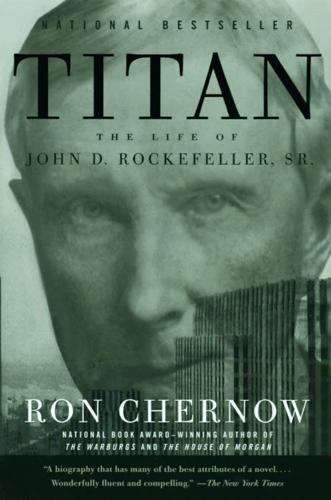
Titan: The Life of John D. Rockefeller, Sr.
by
Ron Chernow
Published 1 Jan 1997
Philadelphia: University of Pennsylvania Press, 1963. ———. Roger Sherman and the Independent Oil Men. Ithaca, N.Y.: Cornell University Press, 1967. Diggins, John Patrick. Max Weber: Politics and the Spirit of Tragedy. New York: Basic Books, 1996. Dolson, Hildegarde. The Great Oildorado: The Gaudy and Turbulent Years of the First Oil Rush: Pennsylvania, 1859–1880. New York: Random House, 1959. Dreiser, Theodore. The Financier. Reprint. New York: Penguin, 1981 [1912]. Du Bois, W.E.B. The Autobiography of W.E.B. Du Bois: A Soliloquy on Viewing My Life from the Last Decade of Its First Century. New York: International Publishers, 1968.

The Food Lab: Better Home Cooking Through Science
by
J. Kenji López-Alt
Published 20 Sep 2015
Instead of staying light and crisp, an onion ring with too much batter will retain too much internal moisture, and as soon as it comes out of the oil, the batter starts getting soggy. • The “split shell.” This occurs when everything appears to be going fine until all of a sudden, through some as-yet-undiscovered mechanism, the batter crust spontaneously splits in half. Oil rushes into the gap, rendering the onion leathery and burnt. • The dreaded worm. This is the most heinous of onion ring crimes. It occurs when the onions aren’t cooked thoroughly, so that rather than breaking off cleanly with each bite, you’re left with a long worm of onion in your mouth and the hollow shell left behind in your hand.